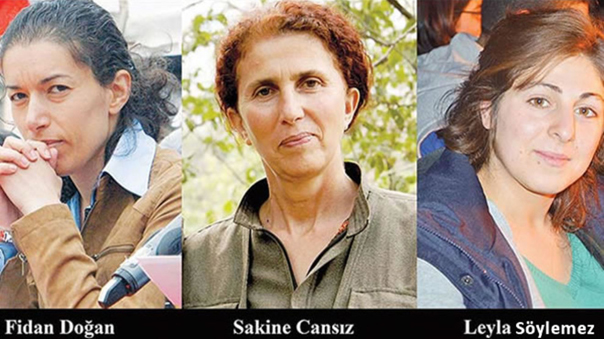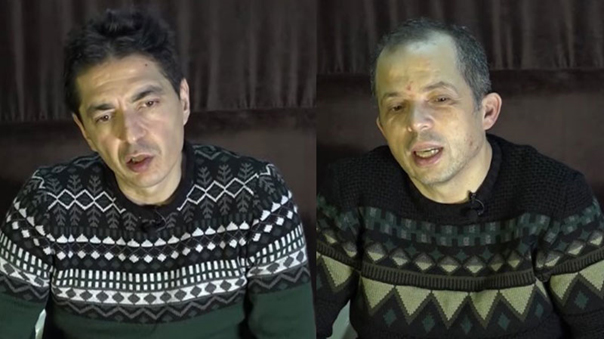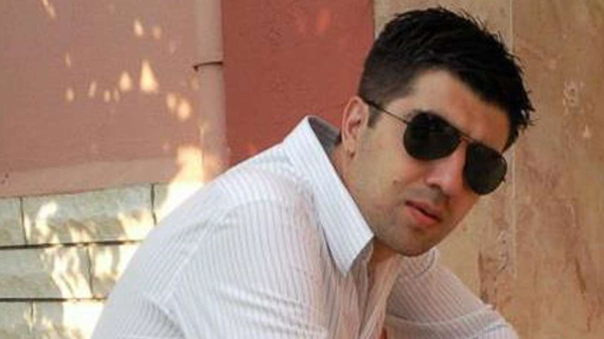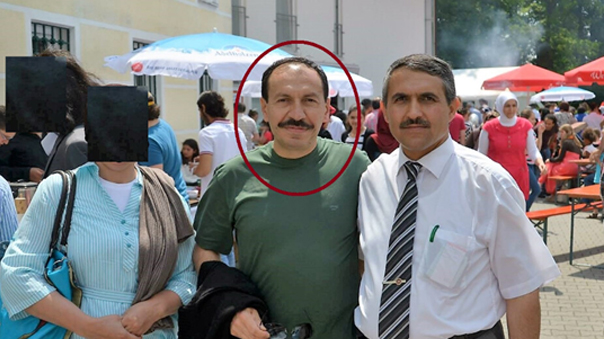MIT's 'backyard' from Paris massacre to Germany - PART 4
France did not initiate any investigations against team members who spied on its territory and attempted assassination in Belgium.
France did not initiate any investigations against team members who spied on its territory and attempted assassination in Belgium.

France did not initiate any investigations against team members who spied on its territory and attempted assassination in Belgium. On the contrary, some of the team members still continue to live in France with complete impunity. In particular, when he was asked about Zekeriya Çelik during the interrogation, İrfan Yeşilyurt allegedly responded "Why are you asking me? He is working for you". What kind of a connection do the French services have with the assassination team? Why do they not share all the information with the Belgian authorities? Did SADAT's chief meet with the French services when he visited Paris in 2018, and if so, what was discussed? Why was İrfan Yeşilyurt detected by the Schengen warning system? Why was he suddenly removed? Most importantly, this time, will the real culprits behind the assassination attempt be revealed in a European court, and will Ankara, in other words, the “head” be touched?
THREE REVOLUTIONARY WOMEN KILLED IN PARIS
It was revealed during the investigation that Turkish intelligence services were involved in the murder of three Kurdish women revolutionaries in Paris on January 9, 2013, but the French authorities did not act bravely and chose to hide it.

Whether there is a direct link between the assassination attempt in Belgium and the executions in Paris has not been "legally" proven, but there are serious doubts that these were “politically” directed by the same centre. In this respect, these two incidents cannot be considered in isolation.
So what happened in Paris? How did it end? One of the founders of the PKK, Sakine Cansız (Sara), KNK Paris Representative Fidan Doğan (Rojbîn), and the member of Kurdish Youth Movement Leyla Şaylemez (Ronahi) were murdered on January 9, 2013, in the heart of Paris with three bullets each.
Immediately after the massacre, an investigation was launched and all arrows were directed at the Turkish intelligence service MIT. Documents revealed in 2014 showed that the order for the massacre was given in Ankara. There was the signature of MIT officials in the instruction classified as confidential dated November 18, 2012. In the instructions, it was revealed that "an operational plan to neutralize Sakine Cansız" was prepared by Ömer Güney.
In an audio recording leaked on the internet on January 12, 2014, it was understood that Ömer Güney made assassination plans together with MIT personnel. Killer Ömer Güney had also asked the MIT for help while making an escape plan in 2014 in a prison in Paris.
Ömer Güney, who was arrested on 17 January 2013 and who was terminally ill for a long time, died in prison on 17 December 2016, in other words, about a month before the trial was to begin. The trial was scheduled to begin in December but was delayed to January 23, 2017 for undisclosed reasons. And the French judiciary closed the case on the grounds that the murder suspect had died.
However, an important development in Southern Kurdistan contributed to the reopening of the file. Two senior MİT officials who planned to assassinate PKK officials were caught in a special operation organised by the guerrillas on August 4, 2017 in Southern Kurdistan.

MIT officials captured by the PKK, Erhan Pekçetin and Aydın Günel
Erhan Pekçetin, who is responsible for overseas operations, and Aydın Günel, who is responsible for human resources, confirmed the confidential document and audio recording in their confession and gave the names of the MİT officials who took part in the talks.
Among the planners of the Paris Massacre was Sebahattin Asal, who was Deputy Undersecretary of Strategic Intelligence in 2018 and Vice President of Ethnic Separatist Activities in 2013. This person had taken part as the right-hand man of Hakan Fidan, the chief of the MIT, during the negotiations between the PKK and the Turkish state.
All information points directly to Ankara. While there was a blockage in the judiciary-police-politician triangle in Paris in revealing those who gave the order, the assassination attempt that emerged in Belgium mobilised the Kurds in Paris too.
The families of three Kurdish revolutionary women led to the launch of a new investigation in Paris. However, politicians and police services, in other words, the state, stand in the way of enlightening the massacre in all its aspects. Despite all the calls and reactions, the French government and intelligence services refuse to release the information they have. Kurdish organisations in France are reacting to the fact that the state’s secrets "are becoming obstacles and prevent revealing the truth". This also ensures that a terrorist crime committed by the Turkish intelligence on French soil goes unpunished.
Undoubtedly, the assassinations and assassination attempts of the Turkish state are not limited to France and Belgium. The Turkish state, which has an extensive espionage network in almost every country in Europe, uses different methods to intimidate its dissidents. Methods such as threats, physical attacks, assassinations, detentions and arrests when entering Turkey, Interpol and kidnapping are used.
GERMANY, BACKYARD OF TURKISH NATIONALISM AND THE MIT
Germany is among the EU countries where the Turkish spy network is most active. The people of Turkey are gaining importance as the largest foreign population living in Germany. However, Turkish- German relations are based on the agreement between Emperor Guillaume II and Abdul Hamid II dating back to 1888. The Prussian general Colmar Freiherr von der Goltz, also known as Goltz Pasha, was tasked with reorganizing the Ottoman army and training future Young Turk cadres. Having a dark and dirty relationship from the Armenian Genocide to German Nazism, both countries later signed an agreement in October 1961 to encourage Turkish workers to work in the Federal Republic. There was a wave of immigration. Thus, Turkish nationalism and paramilitary structures began to take root in Germany. From the Turkish racist Alparslan Türkeş to the architect of the 1980 coup, Kenan Evren, from the Prime Minister of the 1990s, Tansu Çiller, to today's Recep Tayyip Erdoğan and MHP leader Devlet Bahçeli, Germany, which is at the centre of the relationship network of Turkish fascist leaders; In the last century, Germany has become the "backyard" of Turkish nationalism and intelligence.
The Nazi ideology and the idea of "Turanism" fed each other at all times. As a matter of fact, during the Second World War, Türkeş established close ties with the Nazis, and this "friendship" continued after the war. Relations between the two countries did not fail even during the military coups. In short, today's cooperation and complicity is rooted in history.
In this respect, it is not a coincidence that Ömer Güney, who murdered three Kurdish revolutionary women in Paris in 2013, came from Bavaria in particular.

The murder suspect of three Kurdish female revolutionaries in Paris, Ömer Güney
The role of Ruhi Semen, Ömer Güney's collaborator in Germany, is still not fully clarified. Güney, who came to Germany on the grounds of marriage in 2003 and settled in the town of Bad Tölz in the State of Bavaria, has been in contact with Semen most since then. Semen, who was a foreman at a factory called "Kinshofer GmbH", where Güney worked until 2009, was the person who provided recruits to the Turkish state establishments in Germany and even organised Turkish nationalist groups in Bavaria for a long time.
In the last days of January 2013, after Ömer Güney's identity was revealed, colleagues of Güney and Semen at the factory where they worked spoke to ANF, they drew attention to the close relationship between the two, but the French and German authorities never opened an investigation against Semen. Moreover, Semen was recorded as the only person who visited Güney when he was in prison.

The collaborator of shooter Ömer Güney, Ruhi Semen-middle
Despite the fact that he was found to be acting as a courier for the MIT when meeting with Güney on January 4, 2014 in the prison in Paris, Ruhi Semen was not questioned by Germany’s police or judicial departments, and he fled to Turkey. According to the research conducted by ANF in January 2021, Semen returned to Germany years later and continued his activities in the Religious Affairs Turkish-Islamic Union (DITIB), which works like a branch of MIT.
Semen has been an active name in the mosque and association of DITIB in Miesbach for many years. Both towns where Ömer Güney lives in Bavaria belong to Bad Tölz and Schliersee Miesbach. In a photograph obtained by ANF, Semen was seen with a manager of DITIB at a charity bazaar organised by DITIB in the summer of 2013. The close and warm pose of the duo was obvious. It turned out that Semen was still active in DITIB after returning from Turkey in the summer of 2020. It is noteworthy that the German security units, who felt the need not to open an investigation or follow up on Güney, turned a blind eye to his collaborator Ruhi Semen this time.
Part One can be read here
Part Two can be read here
Part Three can be read here